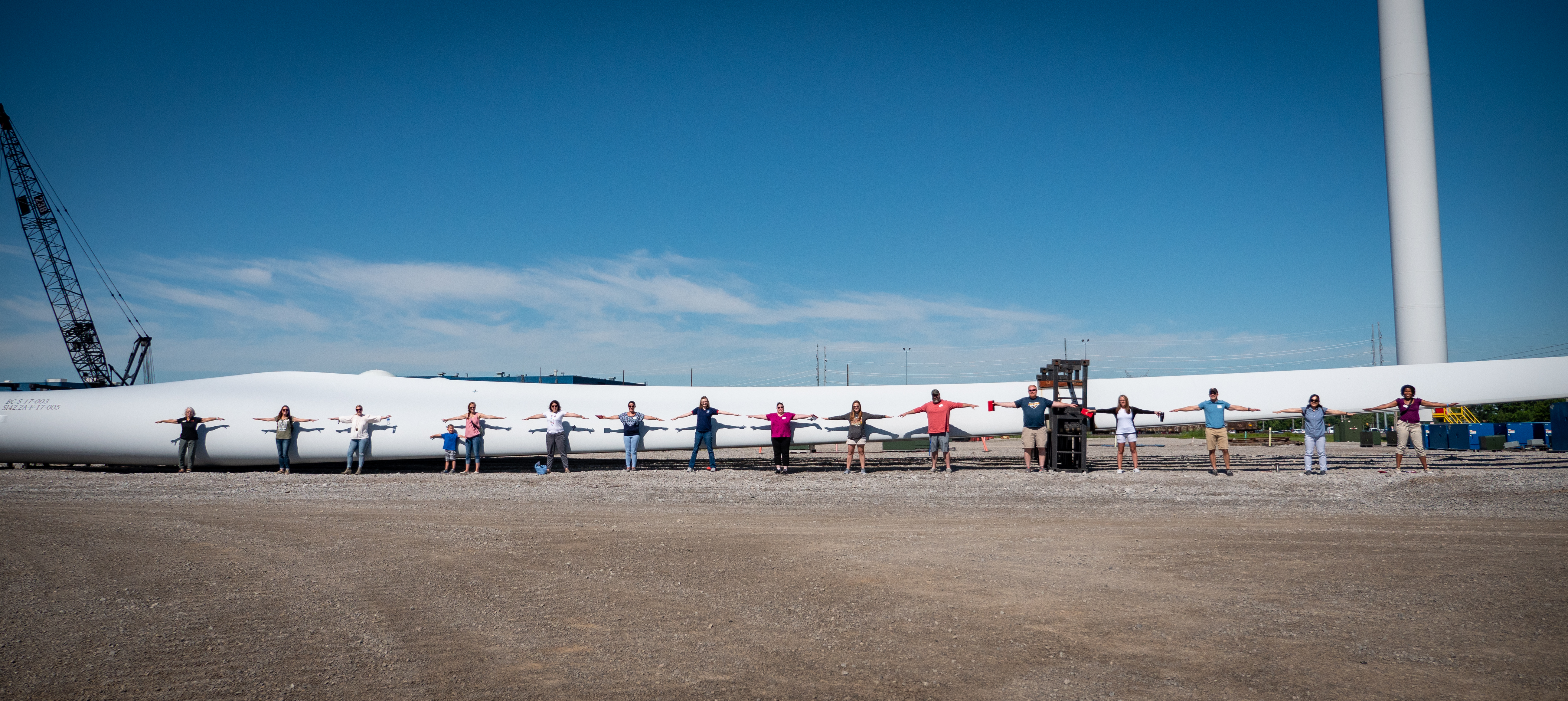SITE PATH
ONE ENERGY FEED

SUBSCRIBE
CONNECT WITH US
News Filters

One of the many chronic work aches is the desire for employees to magically be able to read minds. How much easier would it be if you could peer into your boss’ thoughts and fill in any gaps left in the conversation about their vision for a report you are putting together, a document you need, or even your role at the company? However, mind reading is impossible. And instead, due to lack of time or resources, these conversations can be left vague or unclear, with their meaning left to the discretion of the listener (who had better be damned good at decrypting, or have the authority to make autonomous and educated decisions).
As a leader, it becomes second nature to have a vision for how content is assembled, and it can be difficult to settle for a vision that is not your own. Creating a singular way of thinking, however, creates multiple versions of similar thought patterns, eventually cloning the way a leader may work. At some point “what would my boss want” becomes a part of everyday life, and creativity and ingenuity falters.
Years ago, I spoke with a consultant regarding how to grow a business thoughtfully. This consultant shared a story about a CEO of a manufacturing facility they knew, who was invited to receive an award on behalf of the company at a local business function. While accepting this award, the CEO was asked, if she could do anything to aid in the further success of her business, what it would be? Her answer: to figure out how to clone herself, so she could get more done.
I cringe thinking about this anecdote because it clearly conveys a work anxiety felt by many. Would my boss rather have a clone with their exact same capabilities, or hire someone with different experiences and independent thoughts? As an executive who values autonomy in the workplace, I can confidently say that I do not want to create clones of myself. I want to pass along my knowledge and do what I can to ensure that knowledge can be improved upon over time. Similarly, I don’t want to become a replica of my fellow leaders. I want to take what I’ve learned from the experts around me and improve upon it.
Like a professional sports team with a single star player, workplaces reliant on one key person (or a certain type of person) will not be successful in times of extreme competition. Lebron James could teach me how to dunk every day for 10 years, but it doesn’t mean I would be a good substitute for him in a game. In fact, Lebron’s team might suffer if every one of his teammates played exactly like him. Assembling a corporate leadership team is similar. I have a very different skill set from my co-executives, and my skills are necessary for my very different role within our company.
I want to hire the smartest people available for the roles we need to fill – and recruit team members who are willing to soak up some serious knowledge. I want to give those team members the ability to function uninhibited in their space. I want them to grow and to take on my responsibilities so they can do a better job than I did. I do not want to prescribe a particular way to do things, but a way to think about the activity so they can develop their own methods and arrive at their own path forward.
The workplace needs to have independent thinkers. The workplace must allow for smart people to think for themselves and to make mistakes (it is how we learn). Why would we want employees to read our minds when the alternative has the potential to decrease bottlenecks, increase innovation, increase morale, and make for an overall more productive team? We will grow faster and stronger without having 10 Chelsea Bumbs on the team. We should instead strive for 10 competent and unique individuals.
Mind reading is not only impossible, but ultimately creates an environment that may be more harmful than helpful. For anyone who works alongside me, don’t you dare read my mind. Make good decisions instead.
Chelsea Bumb is the Head of Construction at One Energy.

Why does One Energy only install a few wind turbines at a time, at different sites – rather than big wind farms with hundreds of turbines like the ones you often see on TV or occasionally view from the highway?
Well, each Wind for Industry project is installed to only power ONE facility, instead of to contribute to the electric grid (which distributes power to multiple locations across a region).
Here at One Energy, we implement what are called “behind-the-meter” projects, using a smaller number of turbines on-site at a customer’s facility, like the one pictured in today’s Wind View. Historically, this number has been between one and six turbines. Most companies get their energy from the grid, where generators (such as nuclear reactors or wind farms) produce electricity and distribute it through transmission lines. That’s what’s usually happening when you see big wind farms with lots of turbines – they are sending the electricity they generate to the grid. With a behind-the-meter project, the energy produced from our turbines is directly supplied to our customers’ facilities. That’s why we call it WIND for INDUSTRY!
The benefits? These behind-the-meter projects are efficient because they’re on-site – and they don’t require the partnering facility to make as many infrastructure upgrades. Most importantly, our Wind for Industry customers save money! Purchasing electricity from One Energy at a set rate means they can worry less about the changing electricity rates of publicly available energy, which allows their capital to be deployed for other growth needs. All while decarbonizing their industrial facilities!
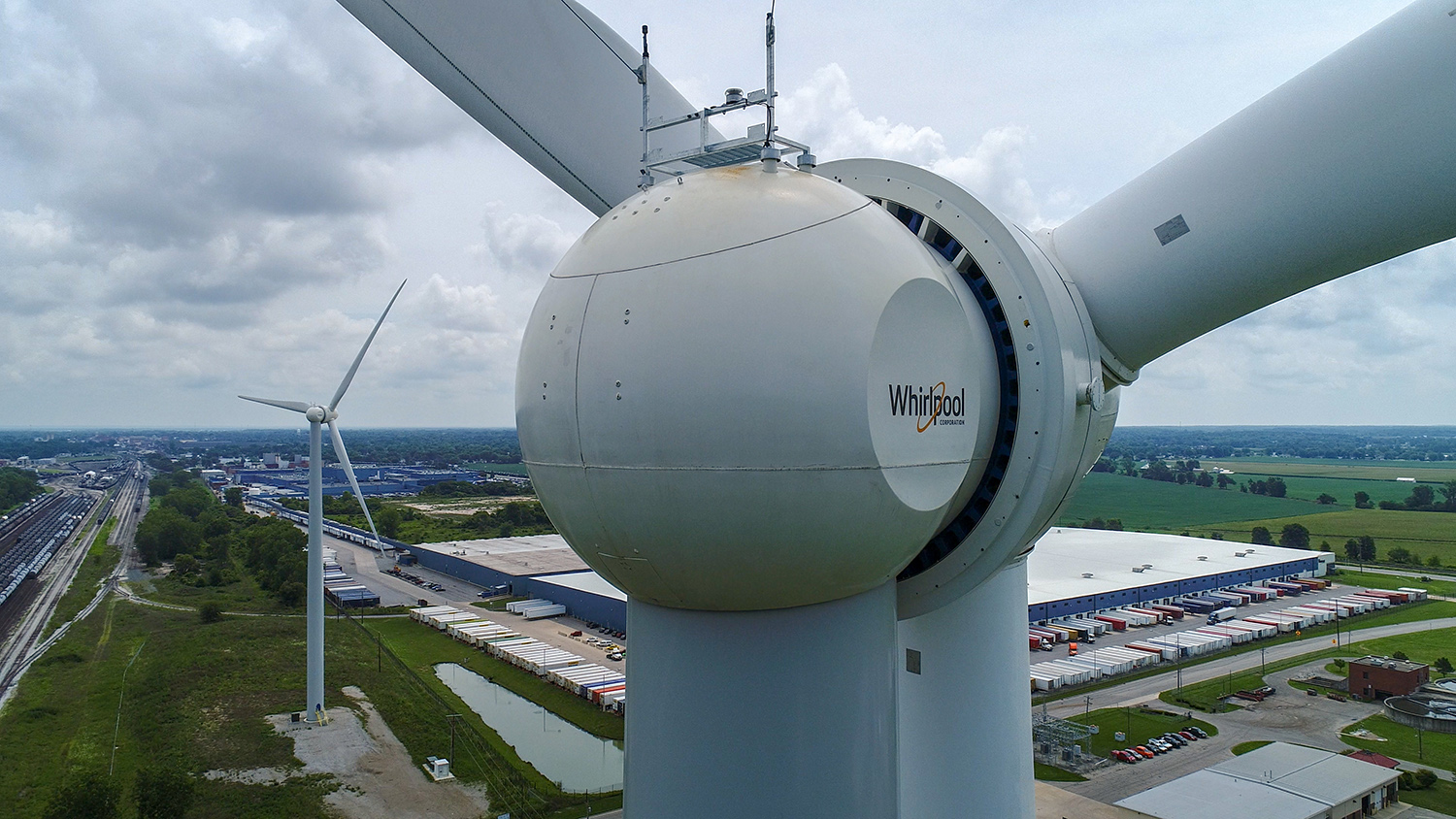

If you’re like us, you can’t just enjoy a root beer float without wondering what the science behind it is.
Today’s episode of Science Shorts can help!
No – we can’t explain why this dessert is so delicious. But we will cover what makes things (like a scoop of ice cream) float!
In this experiment, we use coins, a floatie, and a tub of water to demonstrate the concept of buoyancy. Buoyancy is described as the force that causes an object to float. Watch to learn how buoyancy is related to gravity, and the effects of volume and density on the buoyant force equation.
Subscribe to our YouTube channel and don’t miss any future Science Shorts!
The Paulding County Progress reports on three $5,000 Megawatt Scholarships awarded to local graduates for the three wind turbines at the Lafarge Holcim Paulding facility. Each of these scholarships is awarded annually for the entire 20-year lifetime of the turbine and is just one way One Energy is committed to our local communities. View additional scholarship coverage in The Courier, The Marion Star, and The Lima News.
The article is located on page 2 of the PDF.

At One Energy, we don’t settle for the minimum requirement when it comes to emergency first aid. We prepare for the worst types of injuries, and make sure we’re equipped to address them.
In today’s Safety Minute, CEO Jereme Kent deconstructs the basic trauma kits our construction team keeps on site at all times workers are present. One Energy goes above and beyond to keep our team safe – and our medical gear reflects that.
Watch as Jereme explains what exactly is contained in each OE trauma kit, and demonstrates on Field Engineer Darshan Bhosale to show general placement and use of some items.
To see a full inventory of items contained in these trauma kits, download the list here.
And be sure to subscribe to our YouTube channel so you don’t miss a future minute.

In a high-growth company, how you choose to prioritize your workload can make or break your business. You very rarely have abundant resources to throw at every problem or project. You have to pick and choose which projects require the most attention and carry the most weight. But how do you prioritize when everything is a top priority? If everything is the “most important” how can you possibly determine where you should focus your team?
“Putting out fires” is a term used in the business world to describe a sudden problem that must be tended to immediately so that it does not spread and cause damage. In addition to sudden problems, I also classify unexpected opportunities as fires. While an unseized opportunity won’t cause immediate harm to your company, it may cause lasting damage as the one you let get away. The act of “putting out fires” may have negative connotations in the business world, but when you’re pioneering a new industry, they’re simply unavoidable. No matter how much your company plans, how many forms you standardize, or how many hours of work you put in, fires will always arise. Expecting the unexpected is a requirement of a high-growth company. And in order to deal with the sudden problems (or the unexpected opportunities) your priorities must be flexible.
At One Energy, my team is heavily involved on the sales side of our business as well as the project development side. This means we get fires coming at us from all angles. We sometimes develop projects in areas that have never seen a wind turbine before, which comes with unique challenges each time. We also see our fair share of unexpected sales opportunities that we would be foolish to ignore.
There is a comic strip that floats around our team from time to time when someone wants to describe a particularly smoldering week. It depicts a dog, sitting at a dining room table, drinking coffee, as flames rise around him. In the next frame he calmly states, “This is fine.” Because it is fine, at least in my team’s eyes. You must have a specific team to work in an ever-changing, fast-paced business. It is not for everyone, which is OK. But for the right team, fighting fires is where they thrive. One of my team leaders once said to me, “fighting fires is my favorite part of this job. I love to see the awesome things our team can do under pressure.” It’s our own version of controlled chaos. And I’ve seen it result in an unmatched sense of camaraderie.
With that said, we cannot constantly fight fires. Trying to keep that level of urgency without any breaks will result in team burnout. There must be a balance.
So how do you determine where to funnel resources when it seems like everything is a fire? There is no right answer. The best I’ve been able to come up with is pretty simple: do the best you can with the information and tools you have. Trust your team and trust your decisions. Don’t look back and question where you decided to direct your resources because hindsight is always 20/20. All we can do is assemble the right team to fight the immediate fires without losing sight of the long-term goals.
It is our job as executives to minimize avoidable fires, to say “no” (or “not right now”) to opportunities that are not worth the time and resources. We cannot let the fires burn out our team. It is our job to know our team’s limitations and to know when we are pushing too hard or asking too much. It is also our job to say “yes” and take a chance every once in a while. But no matter what, we must always set the context so that our teams know the importance and relevance of each fire.
At the end of the day, we have to be flexible. When we’re interviewing new candidates, we often get the question “What is a typical day or week like here?” Usually, the response to that question from our team is a bit of a chuckle followed by, “There is no typical day here.” We start and end the week with the same long-term goals, but in between, our weeks are spent adapting, fighting fires, and seizing opportunities. I’d expect nothing less working in a new and innovative industry. Frankly, the idea of a typical day seems quite boring.
Jessica Grosso is the Head of Project Planning and Technology at One Energy.

Our Wind for Industry projects produce electricity, but can generate something even more powerful in the process – curiosity.
At One Energy, we understand the importance of giving not good, but GREAT tours of our headquarters (just read CEO Jereme Kent’s piece about their effect to see why). Educating on wind energy via hands-on excursions through the North Findlay Wind Campus is one way we do so.
We host a wide range of visitors – from STEM teachers, to local organizations, to the kid who just thinks wind turbines are cool. Our goal is to give visitors an experience they’ll never forget – and spark curiosity for future generations.
As lifelong learners, we know the best way to learn something is to experience it yourself and to ask lots of questions. That’s why our tours provide a unique look (and feel!) into One Energy, aiming to be as informative as possible. Everyone has a chance to get up close and personal with our turbines!
Take a Virtual Tour of a Wind Farm here!


Lukas Nelson began climbing wind turbines when he was 18 and just starting out in the wind industry. Now, as the Field Fleet Manager for One Energy’s Wind for Industry projects, not only is he climbing turbines – he’s prolonging their lifespans.
In today’s Climb to the Top, Lukas tells his story – from watching his father put up a utility-scale wind project, to working for turbine manufacturers, to joining the One Energy team!
Subscribe to our YouTube channel to keep up with the climb!
This series can also be found on Facebook, LinkedIn, Instagram, and Twitter.

Big thanks to Ohio Energy Project and the group of junior high/high school teachers they brought to the North Findlay Wind Campus!
The visit consisted of touring the wind turbine component yard and the office building, engaging with a panel of One Energy employees discussing careers in wind energy, and using our conference room for a professional development session.
We’re grateful for the opportunity to host these educators and help build their energy lesson plans!
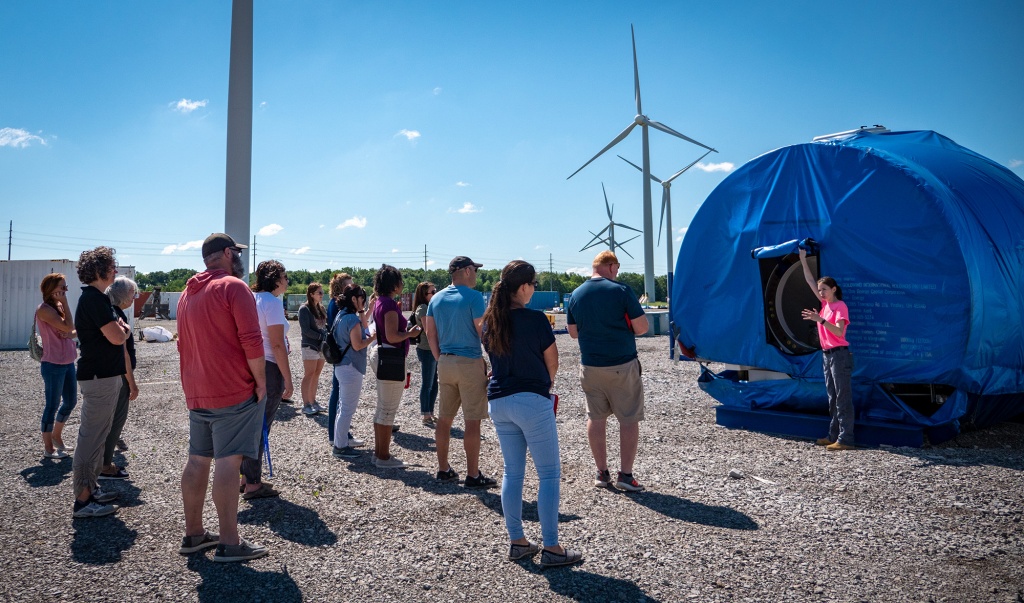
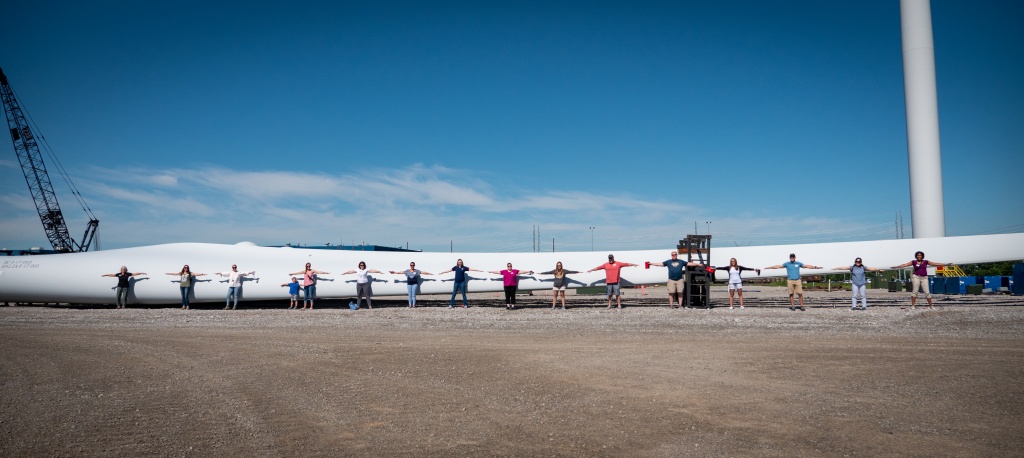
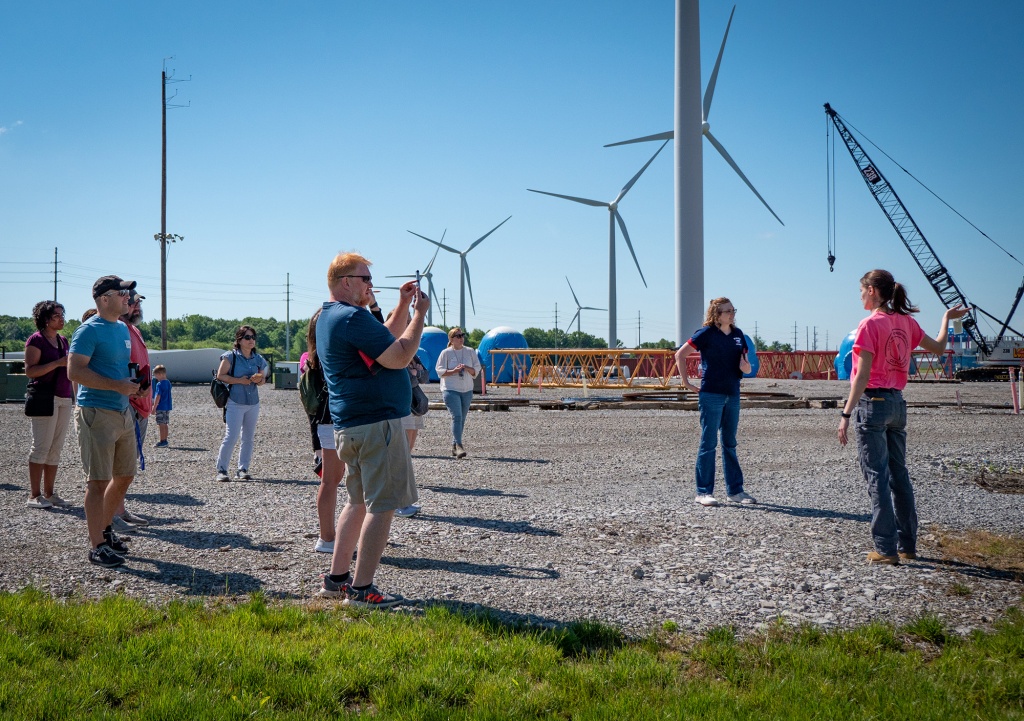

I have watched it time and time again. Bosses and managers putting up toxic barriers to employees making mistakes.
It happens in many forms. There are the non-delegators: managers that don’t hand off or delegate tasks for fear of an employee messing up the project. There are the hot heads: managers that tear apart employees because the employee made a mistake or didn’t do something in the way the manager would. There are the gossipers: “Did you hear Susie did this? What a dumb mistake.” And there are the punishers: those who make it clear that mistakes will bring the risk of demotion, firing, or lack of a promotion.
I get it. Mistakes can cause all sorts of trouble. On the small end they can break things, cause the company to lose time, or cause rework. On the big end, they can be catastrophic, and depending on the industry, even a matter of life and death.
No one wants to make mistakes, and no one wants others to make mistakes.
The conundrum is that people learn the most significant lessons of their lives through making mistakes. Whether you are learning a new task, building something new, or making a decision you have never been empowered to make, you often make mistakes as you improve your skills and knowledge base. People don’t get better at something unless they do it.
Beyond the learning opportunities, being limited from making higher-level decisions or completing new tasks is demoralizing and demotivating. If you don’t empower your employees and let them make mistakes, you will deflate them, stunt their growth, and at the same time stunt the growth of your company.
So, what are managers left to do? You must create an environment where you set people up to do their best work, minimize small mistakes, eliminate big mistakes, and to do this all without you.
To start, hire great people. If the person being tasked with something is not right for that task, (either because they do not have the training, capability, or willingness to embrace the task you are giving them), there is little chance they are going to be an employee who can thrive in their position and avoid devastating mistakes without you.
Second, realize your main role as a manager is not to do – it is to train. Your company must be structured so that managers have sufficient time and opportunities to pass knowledge on and empower people to do their jobs. Otherwise, the manager is set up for failure and so are the employees they supervise.
Third, create the context for decisions. Help others see what you have seen. Tell others about the mistakes you have made. Be open. Give people the framework for what can go wrong and how dire the consequences can be when certain mistakes are made.
And finally, draw the line on mistakes. What mistakes are unacceptable? Tell people before they happen. Don’t assume it is innate knowledge.
This all may take time that you think you do not have. But in truth it is your most important role. The worst thing you can do for your company, its growth, and its future is to discourage your employees from making mistakes. Because when you are doing so, most of the time you are preventing your employees from growing and doing their jobs in the first place.
Katie Johnson Treadway is the Head of Regulatory Affairs at One Energy.

